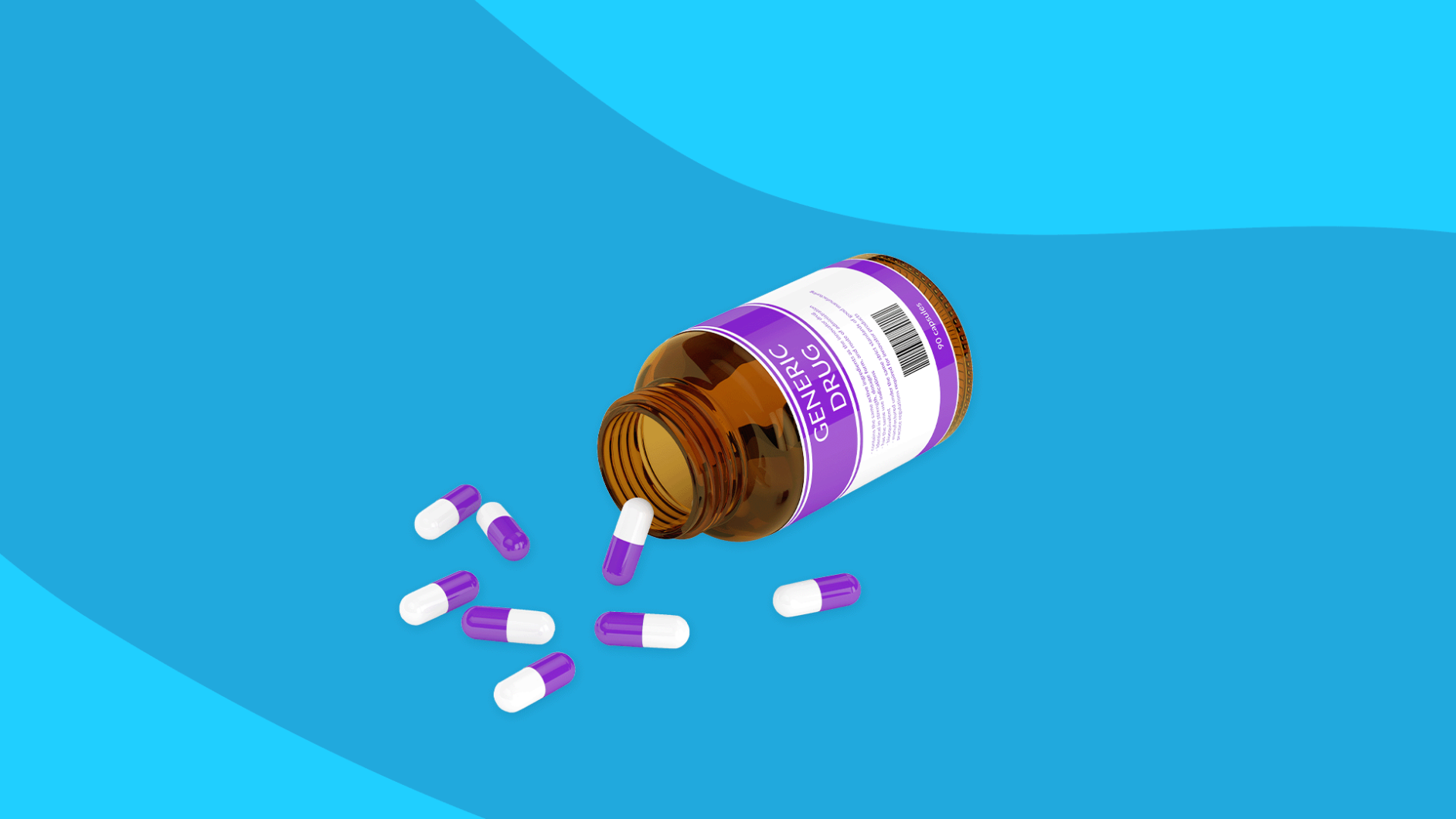Key takeaways
Authorized generics are identical to their brand-name counterparts except in marketing and possibly appearance, offering a less expensive option for consumers.
Generic drugs have the same active ingredients as brand-name drugs and must meet the same standards for safety, effectiveness, and manufacturing, but may have different inactive ingredients and are produced by different companies.
Authorized generics can increase market competition and access to affordable medications, especially after the patent on a brand-name drug expires, benefiting overall healthcare costs.
Consumers can switch to authorized generics by consulting their healthcare provider or pharmacist, potentially saving money through services like SingleCare.
Chances are, you’ve taken a generic or authorized generic medication, and for good reason—according to the U.S. Food and Drug Administration (FDA), generic medications cost 80%-85% less than brand-name drugs.
An estimated 90% of prescriptions filled in the United States are for commonly prescribed generic drugs. Examples include lisinopril for high blood pressure, levothyroxine for hypothyroidism, atorvastatin for high cholesterol, Type 2 diabetes medications like metformin, and others.
RELATED: Top 50 most prescribed drugs of 2022 | Brand-name vs. generic drugs
But, what’s the difference between a regular generic and an authorized generic? Here’s everything you need to know.
What are authorized generics?
Authorized generic drugs and generic drugs have similarities, but there are a few key differences. Here, we explain the differences.
Generic drugs
Generic drugs have the same active ingredients as their brand-name counterparts and must follow the same quality and manufacturing standards. Generic drugs must also be identical to brand-name drugs in the following ways:
- Dosage form
- Route of administration
- Safety
- Effectiveness
- Strength
- Labeling
While generic medications must have the same active ingredient as the brand-name, they may have some inactive ingredients not found in the original medication. They are also manufactured by companies other than the company that originally produced the brand-name drug.
Generic drugs must seek approval from the FDA via a form called an Abbreviated New Drug Application (ANDA) to ensure that they are bioequivalent to the brand-name med, or “equal in the rate and extent to which the active pharmaceutical ingredient (API) becomes available at the site(s) of drug action.” That means it reaches the same area of the body at the same interval of time and at the same amount as the brand-name. Evidence of the generic drug’s safety is not required if bioequivalence can be proved.
Generic drugs are less expensive than their brand-name version, and are just as safe and effective, says Suzanne Soliman, Pharm.D., a board-certified pharmacist, chief academic officer of the Accreditation Council for Medical Affairs, and founder of Pharmacist Moms Group. They are able to be sold at a lower price because the manufacturers do not have the same development and marketing costs as the original company who developed the medication, explains Dr. Soliman.
Authorized generics
Authorized generics are similar to generic drugs, but with an important difference—they are identical to brand-name drugs. Still, they are marketed without using the brand name, and might be a different color or have distinct markings compared with the brand name. In some cases, the authorized generic has the exact same appearance as the brand. They can be produced by the original manufacturer, or another company approved by the brand. Like generic drugs, an authorized generic is often less expensive than the brand-name version of the drug, says Dr. Soliman.
Because authorized generics are deemed to be the therapeutic equivalent of the brand name, no ANDA form is required, but the manufacturer holding the New Drug Application (NDA) for the original drug must give the FDA notice when marketing an authorized generic. The authorized generic can be marketed at the same time as the brand-name.
The value of authorized generics
Since they are identical to the brand-name drug that they are copying, authorized generics provide a lower-cost alternative for consumers, says Dr. Soliman. What’s more, they help increase competition in the market, she adds. “They are often introduced after the patent on the brand-name drug has expired, which allows other manufacturers to produce generic versions of the drug,” Dr. Soliman explains. “Authorized generics can help increase access to affordable medications for patients and may also help reduce overall healthcare costs.”
Authorized generics are typically manufactured and sold by either the brand-name company or a company authorized to make the medication, says Erika Gray, Pharm.D., chief medical officer and co-founder of Toolbox Genomics, a DNA and epigenetic testing company. When a drug’s patent expires, other manufacturers are able to create generic medications, which greatly reduces the brand company’s profits. By creating an authorized generic to market at a reduced price, the brand company maintains a share in the medication’s revenue.
The concept of authorized generics was first introduced in the Medicare Prescription Drug, Improvement, and Modernization Act of 2003, which created the Medicare Part D prescription drug benefit, with the goal being increased competition and lower prices for Medicare recipients, says Dr. Gray. Currently, there are nearly 1,200 authorized generics.
How to switch to an authorized generic prescription
You can start an authorized generic medication by asking your healthcare provider to write the prescription for the authorized generic medication name, says Dr. Gray. If you need help determining the name (or particular manufacturer) of the authorized generic, ask your pharmacist.
SingleCare can help you save on authorized generics (and other prescriptions). Just follow these three easy steps:
- Download our iOS or Android app or go to our website.
- Search for your medication, making sure to adjust for quantity, dosage, and zip code.
- Choose the participating pharmacy closest to you and either print, text, or email yourself a free drug coupon.
When you go to the pharmacy, show your pharmacist the coupon. It’s that simple!




